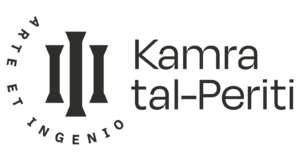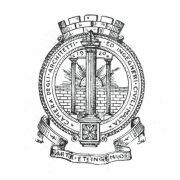Case Study 4 | Change of Use and Related Works on a Property on which another Perit was previously engaged
One of the functions of the Kamra tal-Periti is to investigate complaints of misconduct made against members of the profession. In some cases, it is evident that periti act in bona fide, however in a manner which may give rise to issues of misconduct.
One such case involved a complaint which was received from Perit A in May 2018. Perit A had been engaged to submit an application for sanctioning and alterations to a property including the change of use of a space into a clubhouse. This application was approved and a commencement notice submitted in April 2018.
Perit A subsequently became aware that Perit B had been engaged to submit an application for the change of use of the property to a restaurant, including related alterations, which application had been submitted in February 2018.
Perit A reported that at no time had Perit B notified of such engagement, and also claimed that Perit B had copied certain details (site information and signage) from the first set of permit drawings and reproduced them in the new application drawings.
The Council of the Kamra tal-Periti wrote to Perit B asking for comments on the complaint. Perit B responded stating that the works which were subject of the new application were completely different from those which Perit A was engaged to undertake, that the briefs were different and that the Client had confirmed that the works covered by the first permit would not be undertaken. Furthermore, the fact that the Planning Authority did not require a Change of Perit form was also interpreted by Perit B as an indication that there was no need to inform Perit A. Nevertheless, immediately upon becoming aware of the complaint, Perit B wrote to Perit A apologising for their actions.
Perit B also stated that the elements which Perit A alleged to have been copied from the original permit drawings consisted of site information and signage, and that the new application was not proposing any changes to such aspects. Thus these were indicated on the new application drawings in order to represent the “as existing” situation.
After taking into account all of the submissions by the parties, the Council of the Kamra tal-Periti concluded as follows:
- VERACITY OF ALLEGATION
It is evident that Perit B did submit an application for a change of use and related minor works on a building on which Perit A had been previously engaged to carry out other works. It is also evident that Perit B used the drawings prepared by Perit A as a basis for the new application.
- NATURE OF MISCONDUCT
The Code of Professional Conduct (Chapter 390.01 of the Laws of Malta) states that “A member, on being approached or instructed to proceed with professional work upon which another member was previously employed, shall notify the fact to such architect.”
In this case, the works which Perit B was approached to undertake were different to those entrusted to Perit A, although they concerned the same building. The Council is of the opinion that this presents a borderline case, in view of the following:
- The brief given to Perit B was different to that given to Perit A and therefore it could be considered that Perit B was not “proceeding with work upon which another member was previously employed”;
- The Applicants for the two planning applications appear to be different, although possibly representing the same Client Organisation,and therefore it seems that there was also lack of communication at this level;
- Notwithstanding the above, the fact that the proposed works in the application submitted by Perit B concerned the same site on which a planning permit had been obtained by Perit A and which was still valid, and for which a commencement notice was subsequently submitted, created uncertainty both in terms of responsibility, as well as with regard to Perit A’s relationship with the Client.
The Council was therefore of the opinion that it would have been far more prudent for Perit B to advise Perit A immediately upon being engaged to proceed with the new application, particularly in view of the fact that the structural works covered by the first permit were potentially overlapping in terms of execution timeframe with the new works to be undertaken Perit B’s direction. The Council is nevertheless assured that the actions of Perit B were not intended to supplant Perit A, who would have proceeded to oversee the implementation of the scope of works entrusted to said Perit A.
The Council also took note of Perit B’s explanation that the site information and signage were replicated from Perit A’s drawings since no changes were being effected to these parts in the new application, and therefore these were taken as the “as built” situation. Nevertheless, this further confirms the Council’s opinion that it would have been prudent for Perit B to communicate directly and immediately with Perit A on this matter.
DECISION
The Council concluded that the case presents a borderline situation, further exacerbated by Perit B’s failure to communicate with Perit A. The Council also considered that Perit B had apologised immediately upon being made aware of Perit A’s complaint.
Perit B was formally advised that it would have been prudent to notify Perit A, if anything in order to ensure that Perit A was aware of the Client’s intentions not to proceed with the originally approved works, and was exhorted to exercise more prudence in future similar situations.
The Council has issued this Case Study to remind members of the profession that, at all times, it is important to safeguard the interests of fellow professionals. For the avoidance of doubt, it is recommended that, upon being engaged to carry out new works on a site where another perit was previously engaged, periti should communicate with the pevious perit and advise them of their new engagement, even if the works to be undertaken are different from those originally entrusted to the first perit. It is also to be noted that the administrative requirements of the Planning Authority, such as the requirement or otherwise to submit a Change of Perit form, are not to be confused with the overriding principles outlined in the Code of Professional Conduct.









